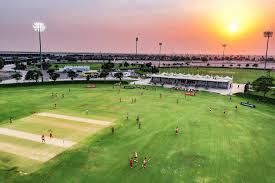Big fixtures change how a city moves. Trains run fuller, rideshare zones shift, and small weather turns can ripple through gates and timetables. A steady plan fixes most pain points: know which entrance serves your section, set a backup route that avoids pinch points, and keep ID, payments, and tickets simple enough to pass checks fast. The aim here is calm action, not drama. Read local advisories the night before, pack for rain or heat in thin layers, and leave a buffer so lines and reroutes do not eat the pre-game window. With a few habits that work in any host city, the day stays about cricket rather than queues, scams, or tired feet.
Gate, weather, and crowd patterns around cricket grounds
Most grounds sit near busy corridors, which means two time waves matter: the run-up to the first ball and the rush right after play. Check the host’s bag rules and any local weather notices; light rain may be fine, but a quick cell can trigger temporary holds at open concourses. Gates tied to premium lounges often clog early, while outer gates stay calmer until twenty minutes before start. Study the seating map and pick the entrance that matches your row, then mark a second and third option. If thunder is in the forecast, plan an early entry, since screening lines tend to slow under shelter when a cell passes right before toss.
Fans tracking squads, fixtures, and venues often keep a few reliable bookmarks to avoid last-minute searches. During the morning check, fixtures pages can help set expectations on start times, travel windows, and broadcast slots; for a clean, cricket-focused reference, readers can read more while staying disciplined about security. Open saved links rather than scanning street QR codes near stadiums, and use a private browser tab on shared devices. The rule of thumb is simple: treat pre-game browsing like boarding a flight. Confirm the gate, confirm the time, and keep one source of truth so the plan does not drift because of a stray link or a noisy thread.
Routes, transport, and meeting points that hold up
A smooth day starts with exit logic. After the match, police may reverse lanes or close side streets, so the way in will rarely be the way out. Set two indoor meet points with clear landmarks – section signs or a named concession – and one outside at a fixed gate number. Preload transit balance in the morning; post-game top-ups stall in long lines. For ride apps, agree on a pickup zone that is inside an official corridor rather than a dark side street, and expect surge pricing at the whistle. On foot, choose well-lit paths with steady foot traffic and avoid narrow alleys, even if navigation apps claim they save a minute.
Timing matters more than distance on match days. Aim to reach the perimeter one hour before play, which absorbs hiccups from ticket scans, bag checks, or a last bathroom stop. If late, skip “shortcut” offers from anyone outside the fence and ask a steward for the least crowded gate that still serves your section. After play, wait five minutes before joining the exit stream if traveling with kids or elders; that pause lets the first surge clear and keeps the group together. When a driver proposes a “faster” drop outside the official lane, decline and switch to a spot with lighting, signage, and staff in view.
Tickets, payments, and phone hygiene
Digital tickets work best when the live barcode stays ready and bright. Log in before security, turn screen brightness up, and keep a paper backup if the venue allows printouts. Store one card for the day in an easy-reach pocket and keep the backup sealed in a deeper pocket. Phone settings should be simple: alerts on for trusted apps, Bluetooth off unless using headphones, and no public Wi-Fi near the grounds. The boring basics prevent small errors from snowballing into lost time at the gate or confused charges later on.
- Save tickets for offline access and test the barcode brightness in daylight.
- Use one “live” payment method; keep a second card and small cash folded flat as backup.
- Turn on bank push alerts for every charge over $1 to catch stray taps fast.
- Bookmark official club and league pages; never follow QR codes handed out on the street.
- Pack a small, venue-approved battery and a short cable to avoid low-power stress.
A calm wrap-up after the final over
Good trips end the way they began: with clear steps. Five minutes before stumps, zip pockets, scan under seats for scarves and cables, and confirm the first meet point. Walk toward the chosen exit rather than the nearest door if it saves time downstream. Keep the group moving until past the police cordon, then open the app for a ride or step to the transit gate already chosen that morning. If weather turns during the walk, head for a marked shelter rather than a random storefront. A day built on simple checks – right gate, steady route, tidy tickets, and clean device habits – keeps the focus on the match, the company, and the city that hosted it.







